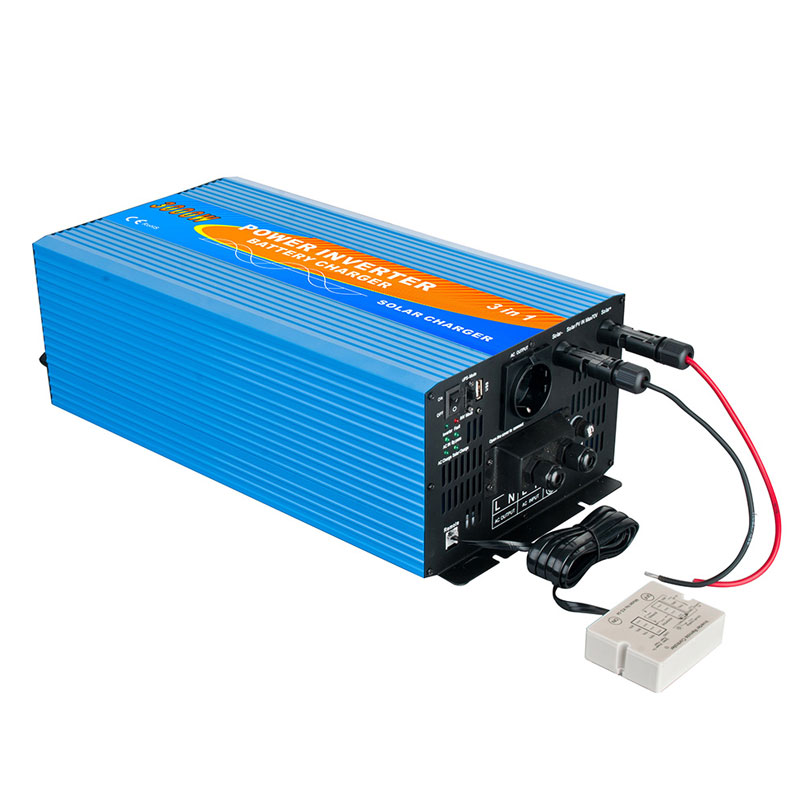Key features and considerations related to inverter with MPPT charger
2023-11-17
An inverter with MPPT (Maximum Power Point Tracking) charger is a type of power conversion device commonly used in solar power systems. This combination of features allows the inverter to efficiently convert DC (direct current) from a solar panel into AC (alternating current) for use in homes or other electrical systems while optimizing the power output from the solar panels. Here are key features and considerations:
1. Inverter Functionality:
- DC to AC Conversion: The primary function of the inverter is to convert the DC power generated by solar panels into usable AC power for household appliances or grid connection.
2. MPPT Charger:
- Maximum Power Point Tracking (MPPT): MPPT is a technology used to maximize the energy harvested from solar panels by adjusting the operating point of the panels to their optimal voltage and current combination.
3. Solar Panel Compatibility:
- Support for Various Panel Configurations: Inverters with MPPT chargers are designed to work with different solar panel configurations and capacities.
4. Efficiency:
- High Efficiency: MPPT chargers are known for their high efficiency in extracting the maximum power from solar panels under varying environmental conditions, such as changes in sunlight intensity or temperature.
5. Battery Charging:
- Battery Charging Capability: In addition to feeding power into the electrical grid, the inverter with MPPT charger often includes the ability to charge batteries, allowing for energy storage.
6. Grid Connectivity:
- Grid-Tied or Off-Grid Operation: Depending on the model, these inverters can operate in grid-tied mode (feeding excess power back to the grid) or in off-grid mode, where they provide power to a standalone system.
7. Monitoring and Control:
- Remote Monitoring: Some inverters come with monitoring capabilities that allow users to track the performance of their solar system remotely.
8. Safety Features:
- Overload Protection: Inverters typically include protection features to prevent damage from overloads or short circuits.
- Temperature Control: Measures to manage and control operating temperatures.
9. Sizing:
- Appropriate Sizing: It's crucial to size the inverter appropriately for the solar panel array and the intended load to ensure optimal performance.
10. Brand-Specific Features:
- Different brands may offer unique features, such as advanced algorithms for MPPT, communication interfaces, or compatibility with specific battery technologies.
11. Installation and Compliance:
- Ensure that the inverter is installed according to manufacturer specifications and complies with local regulations and safety standards.
In summary, an inverter with MPPT charger is a versatile solution for solar power systems. It optimizes energy harvesting from solar panels and provides the flexibility to either feed excess power into the grid or store it in batteries for later use. When considering a specific inverter, it's essential to review the product specifications, consider the specific requirements of the solar system, and ensure compatibility with other components in the system.



